Ready-mixed Concrete Industry History and Background
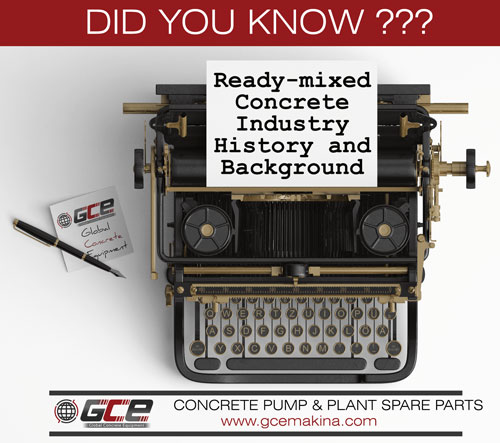
Concrete was regularly used as a building material throughout the twentieth century, but when the National Ready Mixed Concrete Association was founded in 1930, only a handful of ready-mixed plants operated in the United States. The standard practice at the time was for construction firms to mix their own concrete at the job site using bagged cement and aggregates the contractors purchased themselves. (This practice remains common in developing countries.) However, with the wartime industrial and government building during the 1940s and the housing and highways building boom that followed, demand for ready-mixed rose sufficiently to take advantage of the scale economies of specialized offsite concrete mixers. By 1958, the first year in which the industry was considered a separate four-digit manufacturing industry in the Standard Industrial Classification system, there were 3,657 ready-mixed concrete plants. Since that time, the industry has continued to grow, albeit with occasional recessionary setbacks. Over the past 30 years, the industry has been shifting from one dominated by singleplant firms to one where multi-plant operations are becoming increasingly common. In 1958, about 3,100 firms owned the 3,657 ready-mixed plants. By 2002, the number of industry plants had increased to 5,570, but the number of industry firms had fallen below 2,600 (U.S. Census, 1963 and 2006a). This consolidation is reflected in the industry concentration measures seen in Table 1. In 1958, the largest four firms in the industry accounted for only 4 percent of output, and the largest 50 firms a mere 21 percent. The analogous values for 2002 were respectively 11 and 42 percent, still low compared to most manufacturing industries, but substantially higher than earlier values. However, these national concentration measures understate concentration within individual geographic markets, which because of the high transportation costs of concrete, better reflects the competitive environment industry producers face.
Technological Change
The basic process for making ready-mixed concrete has not changed for the past 60 years: dry raw materials are measured, loaded into a bin, mixed, placed into a truck, and water is added (sometimes the order of the last two steps is interchanged). The modest technological advances that have occurred in the industry have come in five areas.
- The first change is automated batching systems. Batching—the process of weighing and mixing the raw materials before they are loaded on the truck—was once a manual operation. An operator would mechanically control the hopper gates that regulated the flow of raw materials into the central mixing bin, weighing each component while proceeding, often by eye on an analog scale. Automated batching systems, where an operator inputs the “recipe” for a readymixed batch into an electronic control system that handles the weighing and mixing operations automatically, began diffusing through the industry during the late 1970s and early 1980s.
- A second change is the substantial increase in the capacity of concrete trucks. A 1953 standards publication described certified mixing trucks ranging in capacities from 2.5 to 7.5 cubic years (National Ready Mixed Concrete Association, 1953), with standard capacities at the time being 3.0 to 4.0 cubic yards. Today, the typical truck capacity is 10 cubic yards, with some able to carry as many as 12. However, because a cubic yard of concrete weighs approximately two tons, the gross weight of a fully-loaded 12-yard truck could be upwards of 38 tons. This 5 comes close to states’ legal limits, which are uniformly 40 tons (some allow overages with a special permit, but most do not have exceptions when the cargo is divisible like concrete).
- A third change is a continuing expansion in the variety of chemical admixtures that can be added to a concrete batch to affect its properties in useful ways. For example, admixtures can affect workability (how easily the concrete can be formed into shapes), curing times, color, porosity, and other attributes. This flexibility in the physical attributes of the final product has increased the range of uses of ready-mixed concrete.
- A fourth change involves improvements in logistical coordination gained through the move toward centralized delivery dispatch. Ready-mixed concrete producers are not just manufacturers, they are logisticians: they deliver, typically on short notice, a perishable product to time-sensitive buyers in multiple locations. Owning several plants in a local area and coordinating their deliveries through a central office offers potential productivity gains by consolidating overhead (one dispatcher handles deliveries from several plants that would each have their own dispatcher in single-unit firms) and allowing more efficient use of available resources through cross-plant substitution of production and deliveries. Hortaçsu and Syverson (2007) find evidence of these productivity gains among ready-mixed plants whose owning firms are vertically integrated into cement. Nonproduction workers account for a lower fraction of employment at these plants, consistent with a reduction in overhead labor from moving to central dispatch. Firms’ plant location choices also reflect attempts to harness such efficiency benefits. For example Lafarge (2005), an integrated cement and concrete producer, states in its 2004 20-F filing that, “We aim to place our ready mix concrete plants in clusters in each micro market in which we operate in order to optimize our delivery flexibility, capacity and backup capability. While Hortaçsu and Syverson look specifically at vertically integrated firms, the findings suggest that the logistical efficiencies do not rely on vertical structure per se. What appears instead to be important is the total size of the firm’s ready-mixed operation in the local market. That is, while plants in vertically integrated firms are more productive on average than unintegrated plants in the same market, they do not have significantly different total factor productivity levels than plants in unintegrated firms with similar local concrete sales. Coordination and its possible efficiency gains are therefore not exclusive to vertically integrated firms, but rather are available to any firm with the necessary scale (and the operational ability to manage such operations).
- A final technological advance affected the concrete industry, although it actually occurred for the most part outside of the industry. Concrete pumps are used to place concrete on a job site by pumping it through tubes suspended from a boom. These concrete pumps are typically owned and operated by construction contractors or specialty firms, rather than by the ready-mixed producer. Pumps allow virtually uninterrupted placement of concrete and make it easy to change the location where concrete is poured. (The alternative process is to load bucket after bucket with wet concrete, move the buckets one load at a time into place with a crane, and pour the contents into the mold.) Certain admixtures mentioned earlier increase the flowability of wet concrete, improving pumping performance. Pumping is limited in practical terms only by the power of the pumps, which can be quite large. The 92-floor Trump Tower in Chicago, for instance, is being built with the help of a 680-horsepower concrete pump able to lift 3,000 pounds 1,000 feet in one minute (Sleets and Klaxton, 2006).
This article was written by Chad Syverson.
Chad Syverson is Associate Professor of Economics, University of Chicago, Chicago, Illinois and Faculty Research Fellow, National Bureau of Economic Research, Cambridge, Massachusetts.
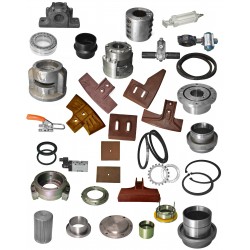
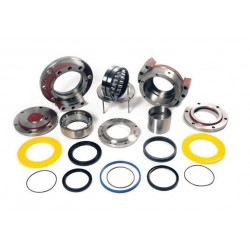
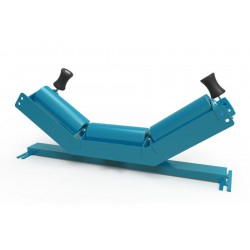
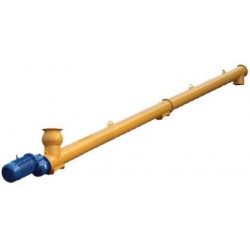
Write a Comment